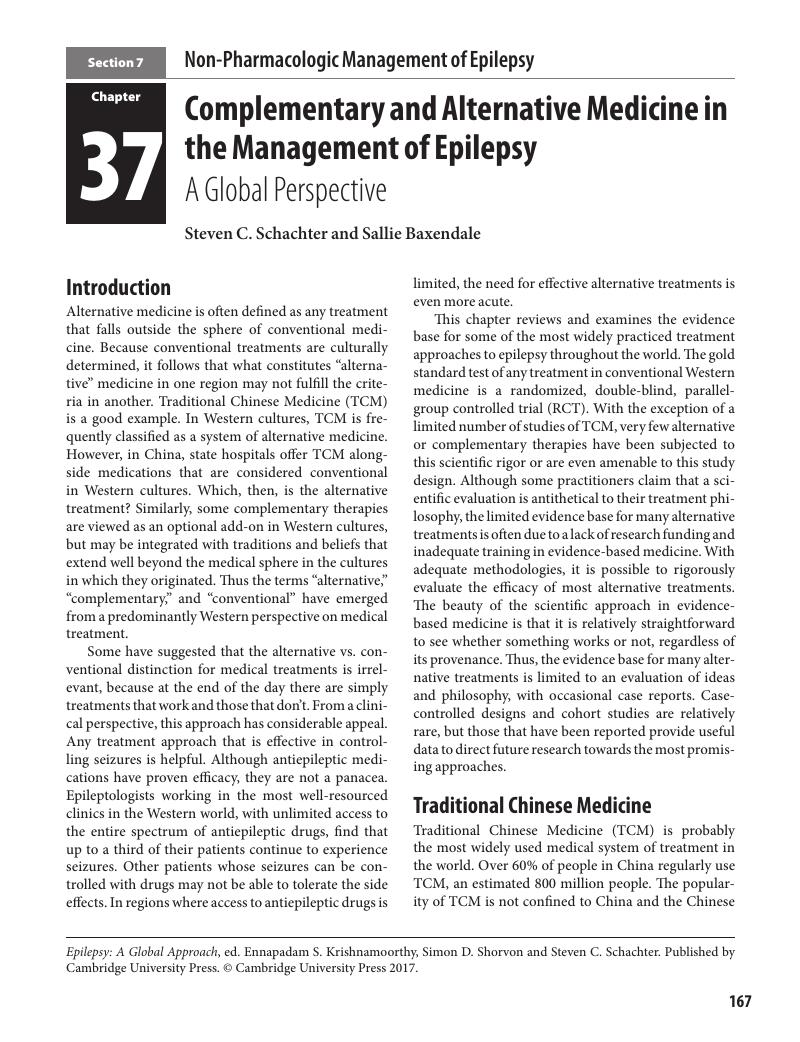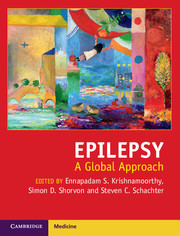Book contents
- EpilepsyA Global Approach
- Epilepsy
- Copyright page
- Dedication
- Contents
- Contributors
- Acknowledgments
- Section 1 Editorial Introduction
- Section 2 Infective Causes of Epilepsy
- Section 3 Consequences of Epilepsy
- Section 4 Comprehensive Epilepsy Care
- Section 5 The Medical Management of Epilepsy
- Section 6 The Surgical Management of Epilepsy
- Section 7 Non-Pharmacologic Management of Epilepsy
- 33 Non-Pharmacologic and Psychological Management of Epilepsy in Developed Countries
- 34 Ayurveda and Yoga in the Management of Epilepsy
- 35 Traditional Chinese Medicine in the Management of Epilepsy
- 36 Traditional Medicine in the Management of Epilepsy in Ghana
- 37 Complementary and Alternative Medicine in the Management of Epilepsy
- 38 Integrated Thought
- Section 8 Epilepsy Issues with Global Health Impact
- Section 9 International Perspectives
- Index
- References
37 - Complementary and Alternative Medicine in the Management of Epilepsy
A Global Perspective
from Section 7 - Non-Pharmacologic Management of Epilepsy
Published online by Cambridge University Press: 13 April 2017
- EpilepsyA Global Approach
- Epilepsy
- Copyright page
- Dedication
- Contents
- Contributors
- Acknowledgments
- Section 1 Editorial Introduction
- Section 2 Infective Causes of Epilepsy
- Section 3 Consequences of Epilepsy
- Section 4 Comprehensive Epilepsy Care
- Section 5 The Medical Management of Epilepsy
- Section 6 The Surgical Management of Epilepsy
- Section 7 Non-Pharmacologic Management of Epilepsy
- 33 Non-Pharmacologic and Psychological Management of Epilepsy in Developed Countries
- 34 Ayurveda and Yoga in the Management of Epilepsy
- 35 Traditional Chinese Medicine in the Management of Epilepsy
- 36 Traditional Medicine in the Management of Epilepsy in Ghana
- 37 Complementary and Alternative Medicine in the Management of Epilepsy
- 38 Integrated Thought
- Section 8 Epilepsy Issues with Global Health Impact
- Section 9 International Perspectives
- Index
- References
Summary

- Type
- Chapter
- Information
- EpilepsyA Global Approach, pp. 167 - 173Publisher: Cambridge University PressPrint publication year: 2017



